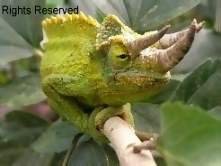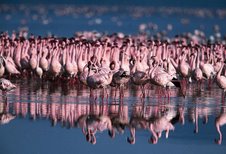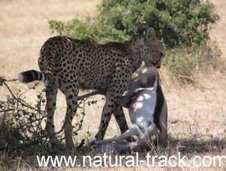Camping in Kenya offers you utmost flexibility. Since you have all the basics that you need in your adventure camping vehicle, time is at your control.This makes it all so easy and relaxing knowing that you can spend as much time or less depending on where you want to visit.
The superb tropical climate with hot breezy days and cool tranquil nights gives you an interpretable sensation. The sceneries thrilled with undisturbed reserves and the great natural attractions such as lakes, Mountains ranges, snow peaks, wildlife, forests and culturated expanses will leave you dreadly inspired. An interaction with the local people in their ethnicity is a great prove that africa's diversity is unique.
Among the many places worth visit in africa, you will find kenya tour to be more deserving. Imagine camping in the heart of wildlife thrilled savanahs surrounded by beautiful sceneries and clear open skies at night. In some places, you can opt to spend your night under open skies and enjoy the quietness of the cool breezes.
But this depends on how you plan it. The most important thing for any successful camping is advance planning. You need to plan on where to go, when, how long and the number of people you will be sharing the experience with. With these in mind, then it will be easier for you to do your budget and also know what is essential and what is not. Altenatively have a local agent do the arrangements for you.
Then its time to pack your camping gear. If you are booking your camping tour through a Kenya tour operator, then you will be exempted the task of carrying a complete gear since most Kenya tour firms will do this for you. But if this is not the case, then you will need to itemize your gear and all the essentials that you would use while camping. Depending on when and where you like to camp and what you like to do, the list will be ever changing. A tip is to think flexibility. The ease with which you can set/move camp and off course the weight of your stuff, including foods.
You've finally arrived at your camping destination and you're scoping out the area to see which spot looks best for setting up your campsite. While choosing the campsite, please consider pitching your tent on slightly high level ground to keep you safe incase of rains. You will also need to consider fundermental issues such as water source, adequate cooking area, cleaning area (don’t kill vegation with hot soapy water), garbage area and finally, consider a camping area with some shade.
After setting up the campsite it's time to go do what you came here to do, "go play!" Whatever your preoccupation is, enjoy! Do such refreshing things as; seeing the campsite set up, smelling the country air, short walks, go bird watching, take a bike ride, stroll around, eat well, enjoy a drink and if possible get a feel with the local communities. This is a refreshing change from all of the confines of the city.
Then in the evening enjoy the orange African fire while the sounds of wilderness fill the night: Night birds, the laughter of hyenas, the buzz of a mosquito or the occasional roar of lions proclaiming their territory.
Kenya Camping safari , whether with pals or family can be lots of fun. But you need to pay attention to a couple of things for example baboons and vervet monkeys. Baboons can be a menace and some times destructive. So as to cope with baboons and monkeys, always make sure; you close your tent, never leave you campsite unattended and constantly keep all the foodstuffs away from their, because that is what they seek. This way, you will be able to keep them off the temptation.
It's time to leave the camp? A little effort is all that you need to expend in order to ensure that the next camper arriving at the campsite after you will enjoy it just as much. The most basic principle rule for camping is: Leave No Trace. It's all about respect for nature. If campers would just leave their campsites the better than the way they found them (assuming it was clean to begin with), then we will all be doing our share in making sure that other generations will have their share of fun in the wilds of Africa. Its beyond any doubt that africa makes one of the most wonderful and adventurous kenya camping safari vacation for any one who enjoy outdoor adventures camping safaris.
PKP-Kenia safari desk
Natural Track Safaris








